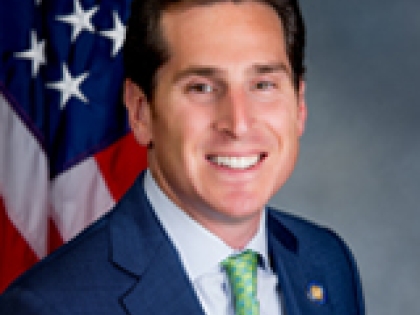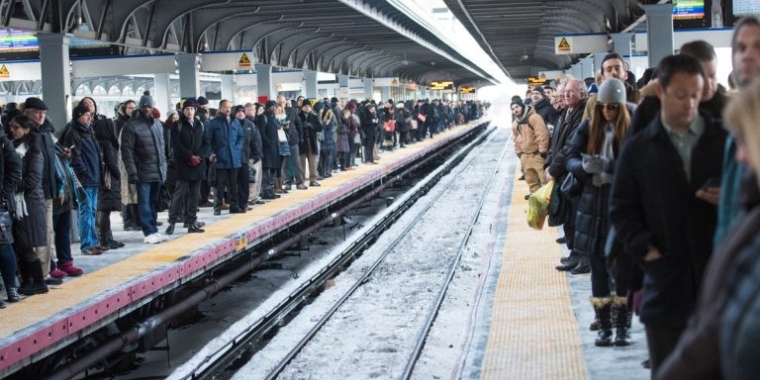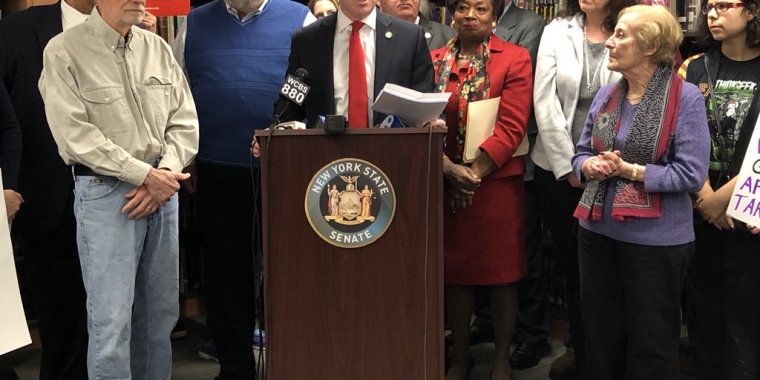
LIRR: Train service returning to weekday schedule
The Long Island Rail Road will roll back its service cuts later this month after receiving harsh criticism from elected officials, including Gov. Andrew M. Cuomo, and riders for packing passengers into overcrowded trains during a pandemic.
"We heard our customers' concerns about our new schedule loud and clear," LIRR president Phillip Eng said in a statement released Tuesday afternoon, shortly after Cuomo called on the railroad to "reverse what they’ve done" and "increase service."
Eng said the LIRR will return to its previous schedule on March 29.
"In the meantime," he said, "we will continue to strategically add additional trains and lengthen trains to meet evolving ridership levels."
During a telephone briefing Tuesday afternoon with the news media, Cuomo acknowledged that the new service plan "certainly didn’t work well."
"There were a lot of reports of overcrowded trains. We don’t want overcrowded trains, especially during this period of COVID," Cuomo said. "I understand the financial constraints. I understand there’s reduced ridership. But it’s smarter to have fewer people on a train during this period, even if it’s not cost effective."
LIRR officials said the three weeks until the 29th were needed to sort out staffing and assignments, adjust track work schedules, and figure out new lengths for train sets.
The rollback can't come soon enough for many commuters, whose protests over crowding conditions on trains continued through the Tuesday evening rush. One rider, sharing a photo on Twitter of several passengers standing close to each other on the 5:45 p.m. train from Penn Station to Long Beach, said the March 29 restoration "doesn't solve this."
The LIRR's schedule reduction — aimed at cutting costs and accelerating track work — went into effect Monday and almost immediately sparked a chorus of critics questioning the logic of significantly shrinking train capacity while trying to promote social distancing. On some branches, trains are running only once an hour even during peak travel periods.
Anthony Simon, who heads the railroad’s largest union, said he was glad officials with the Metropolitan Transportation Authority, the state agency that runs the LIRR, "came to their senses."
"I just hope no one has contracted COVID over the last two days of this debacle," Simon said.
Eng had said that only an "isolated few" trains had experienced crowding, and the LIRR was adding service as necessary. Since Monday morning, nine trains were plugged back into the schedule, primarily serving riders on the Babylon and Ronkonkoma lines. Other trains were lengthened or added stops to accommodate displaced riders.
Even with a few more trains to pick from, commuters still complained about the close quarters on board some rush hour trains Tuesday. One picture, tweeted to the LIRR that showed passengers standing in a clump, was captioned: "This is on the 701 am Babylon train to Penn, car 7669. Surely this isn’t even remotely safe. Glad you’re saving money though. Disgraceful."
Citing reduced ridership throughout the pandemic, and the opportunity to accelerate infrastructure work on its tracks, the LIRR last month announced the plan to reduce weekday service to about 75% of pre-pandemic levels. Railroad officials said the changes would save about $15 million in operating costs.
The plan was immediately met with criticism, especially given that the MTA stands to receive $14.5 billion in total federal coronavirus stimulus aid — enough to cover fare revenue losses through 2021 and beyond.
The service restoration plan was celebrated by elected officials who had pushed the LIRR to rethink its cuts. Sen. Todd Kaminsky (D-Long Beach), a member of the Senate Tranpsportation Committee, said the change "will provide Long Islanders with the sane, safe and dignified commutes they deserve."
Rep. Tom Suozzi (D-Glen Cove) credited LIRR customers, employees and union leaders, whose "collective voices were heard."
Rep. Lee Zeldin (R-Shirley) said he was "glad that the MTA and LIRR listened to our calls to ensure the safety of our constituents on their commutes to work."
The LIRR Commuter Council — the railroad’s state-regulated watchdog group, in a letter to Cuomo Monday, said the cuts ran counter to the reopening of the region's economy.
" … what we’ve seen is people waiting for trains that don’t come, packed, standing-room-only trains, commutes extended by anywhere from 30 minutes to two hours — and a clear threat that people will abandon the railroad and get into their cars, perhaps for good," council chairman Gerard Bringmann said. "These cuts send exactly the wrong message at exactly the wrong time. They will drive people away when we need them to come back."


